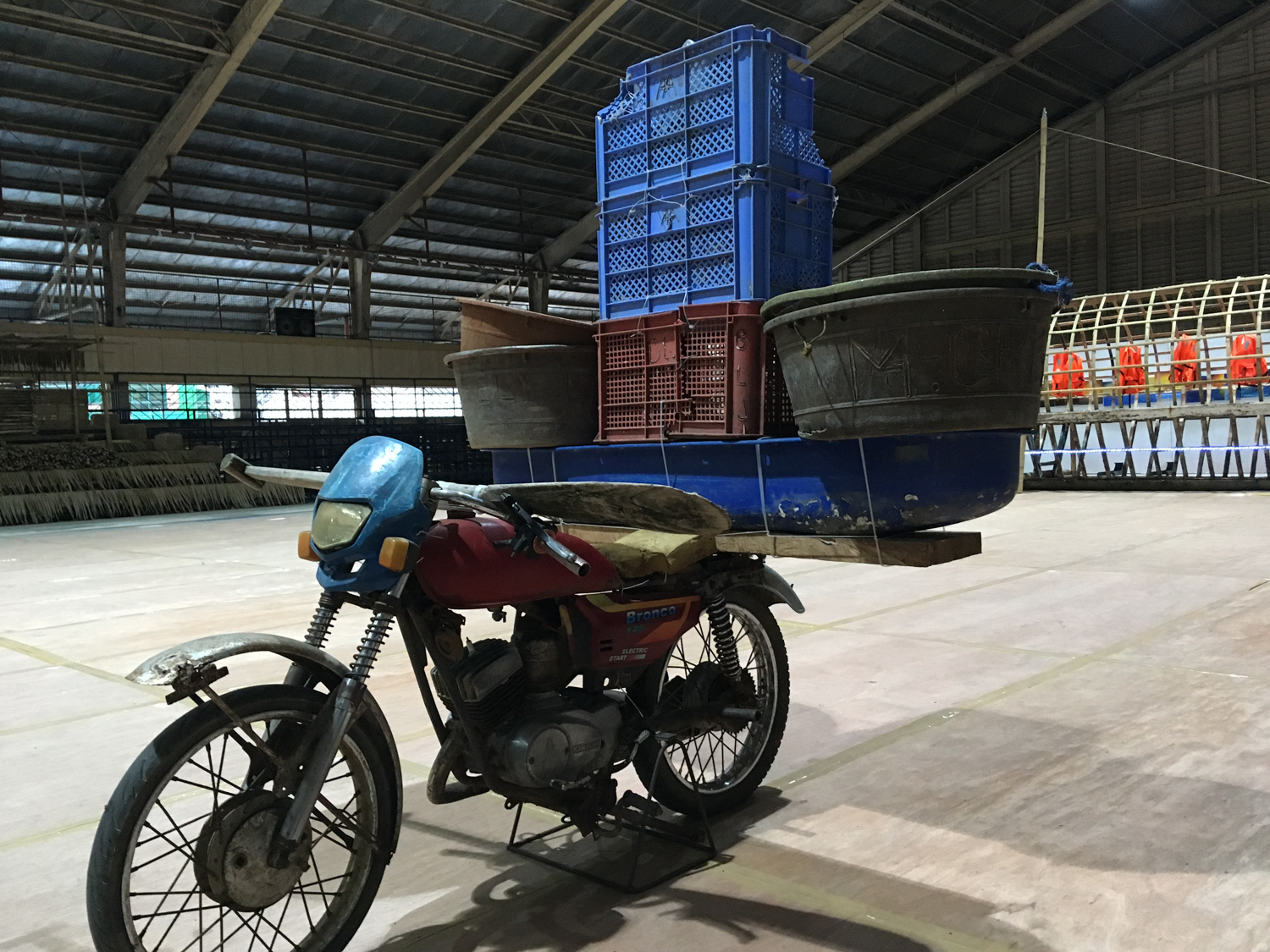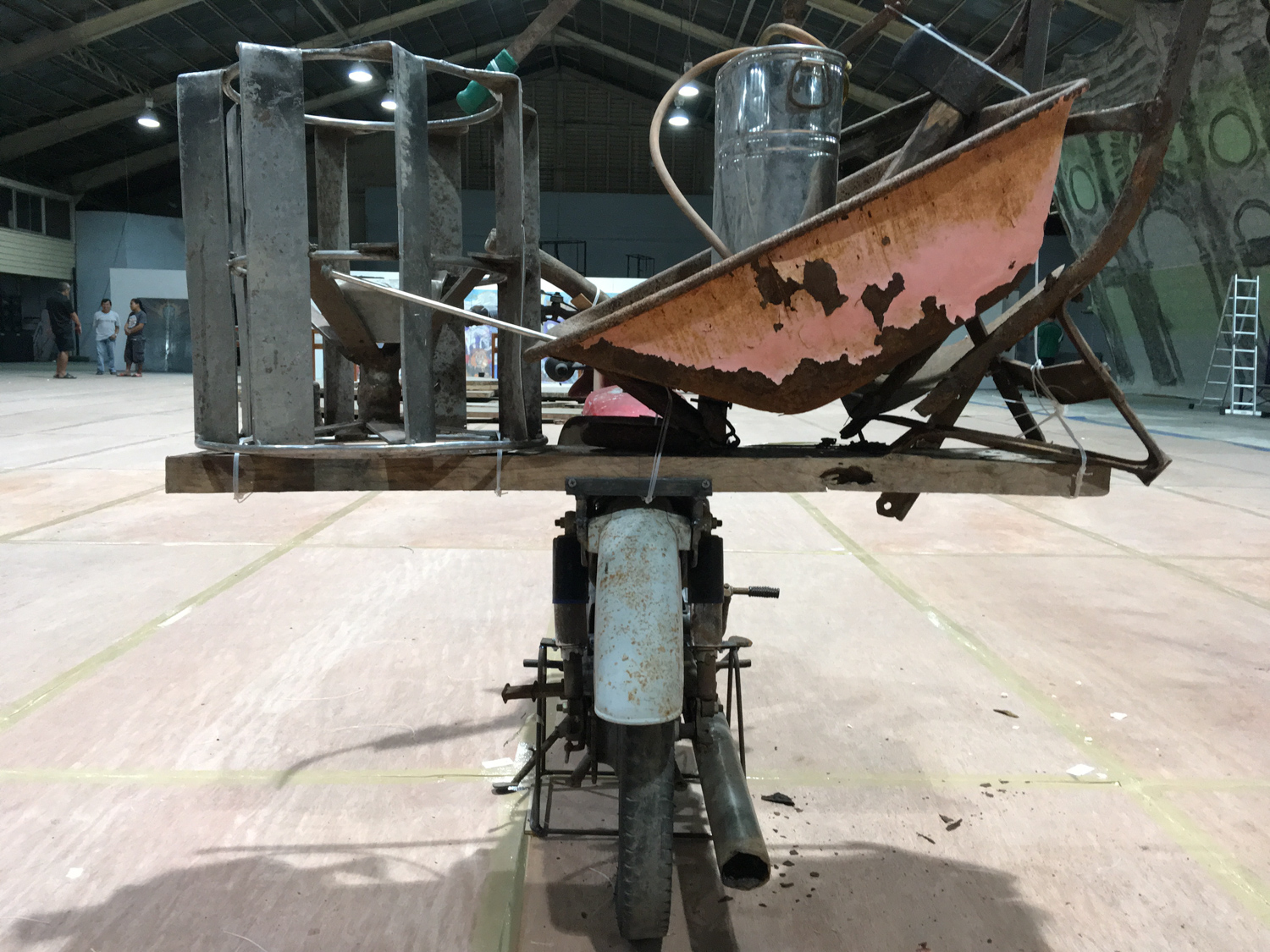Reimagining the Rural: VIVA ExCon’s Commitment to Social Change — 10.29.2020
Much has been said about the success of VIVA ExCon as the longest-running biennial in the country. Its modest claim of having “bridged” the islands in the Visayas has over the years been repeatedly affirmed. But as an artists’ initiative, it still has a long way to go as far as its social aspirations of contributing and uplifting the lives of people in the rural areas in terms of cultural and knowledge production.
The rural scenery is rapidly changing. Prospects in agriculture and aquaculture are met with daunting challenges not only in Capiz but also in other rural areas in the Visayas. Unstable policies on land conversion from agricultural to industrial zones, non-implementation of real land reform in the sugar lands, damages to agricultural crops due to natural calamities, and most of all, the ongoing killings of farmers, activists, human rights advocates, and militarization in the countrysides, are just the most formidable obstacles for the rural sector to develop into modern communities.
According to the Department of Agriculture, the average age of the Filipino farmer today is 57. Even if he lives and works until 70, our agricultural sector will be in dire need of new and younger farmers 15 years from now. Sadly, the younger generation does not find farming to be rewarding. Those who graduate from high school and college would rather move to urban centers to find work in the industrial, commercial, and corporate sectors. This migration to bigger cities by younger people further contributes to the slowing down of rural economies.
Grounded on social relevance, an important aspect of VIVA ExCon’s vision is to address economic and socio-cultural issues in rural provinces. Local government units are encouraged to shift their paradigm on rural development agenda to integrate arts and culture as a strategic and vital component. An arts festival for example, while may be slanted towards tourism, offers new avenues for context-sensitive and culture-smart interaction between sectors in the locality. An arts festival could be harnessed as a tool for human and material development. It can help build and increase social capital and strengthen community cooperation.
VIVA ExCon Capiz 2018 aims to provide a platform to showcase and discuss relevant issues and concerns on contemporary cultural production set against a rural backdrop. Such engagement hopes to become a springboard for new collaborations and reciprocal exchanges among local and international art communities with the support of local government units. With this, VIVA ExCon reimagines the rural as a wellspring of fresh ideas and a source of inspiration for social innovations.
Curatorial Team
Reprinted from VIVA ExCon Capiz 2018 Program
(updated version)

“Kinahang-ean bunyagan (needs watering)” installation by Kuh del Rosario. Images from VIVA ExCon Capiz 2018 exhibition “Bisan Tubig Di Magbalon (Don’t Even Bring Water)” by Norberto Roldan.

“Kinahang-ean bunyagan (needs watering)” installation by Kuh del Rosario.

Salvaged fishing boat being hauled to the exhibition venue.

Salvaged fishing boat being hauled to the exhibition venue.

“D Stryker: After Yolanda” installation by Diokno Pasilan in collaboration with Santiago Alvarez and Omel Artates.

“D Stryker: After Yolanda” installation by Diokno Pasilan in collaboration with Santiago Alvarez and Omel Artates.

“Habal-habal” installation by SKYLAB (Jonard Villarde, Ania Shane Martinez, Mercy Audencia, and Santiago Alvarez).

“Habal-habal” installation by SKYLAB (Jonard Villarde, Ania Shane Martinez, Mercy Audencia, and Santiago Alvarez).

“Habal-habal” installation by SKYLAB (Jonard Villarde, Ania Shane Martinez, Mercy Audencia, and Santiago Alvarez).

